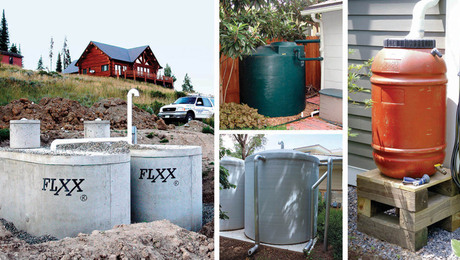I am finishing my basement using standard wall framing, 2×4 16″ O.C. The permit from the building dept has a note stating “Must fire block intersection of walls and ceiling”.
Being a handy homeowner doing the framing myself I’m not entirely sure what this means. I realize it’s for blocking fire from passing to upper floors, but can someone describe the framing process. Is it simply adding 2×4 blocking where the wall and ceiling will meet?


















Replies
I can only state some generalities, as codes can (and do) vary.
In general, the building dept. and the fire marshal want to do two things: stop any "chimney" effects between floors, and prevent any burnable material that allows fire to move between floors. That is they want any penetration between one floor and the next to be sealed from air, and no verticle wood between stories. So you apply some form of fire stop in holes for wiring, pipes, etc. Typically the requirements are stated as "minimum burn times".
Usually, a top plate of 2X material is sufficient as long as it extends the entire distance. If not a single, then a double 2X should be ok. Since most walls are built with a solid top plate, this serves as a fire block. Basically, you do not want any verticle wood to pass unheeded from one story into the next, say a stud in the basement attached to a floor joist without a continuous barrier.
Hope that makes sense.
When you have a basement wall (concrete) and you build a 2x4 wall out from that, there should be a gap between the back of the stud and the concrete. That gap if you look up allows air/fire to get into the joist bays. They want that blocked. What we do is if we have used 1 1/2 mudsill, we get 1x6 or 1x8 nail that tight to the mudsill, but out to the line you've snapped on the underside of the joists. Then, nail a 2x4 plate to that 1x, build your wall and you are firestopped.
http://pic9.picturetrail.com/VOL293/2163851/6440753/92263015.jpg
http://pic9.picturetrail.com/VOL293/2163851/6440753/92263019.jpg
That really helps. Thanks!
Chaz, the easiest way we found is to seal the gap area with wood, but we also use insulation that has the properties needed to act as firestopping.
You can pick up a bag of this material at any commercial ceiling material distributer.
blueJust because you can, doesn't mean you should!
Warning! Be cautious when taking any framing advice from me. There are some in here who think I'm a hackmeister...they might be right! Of course, they might be wrong too!
You're probably better off asking the guys at your local building department what they expect.
What they want where you live might be completely different from what everyone else does.
In the few basements i've done recently we have used 5/8" sheetrock for fire stopping. I have layed out my walls and transferred my line for my top plate to the floor joists. The line ould be the front of the wall. Then cut stips of sheetrock that fit between the line and the mudsill of the floor system. We also fire caulk any gaps around wiring or plumbing. Sometimes we go a little over board with the fire caulk but the inspector never questions what we've done.
I would call the building department in your area and find out what they want to see,they will probably tell you what i just described.